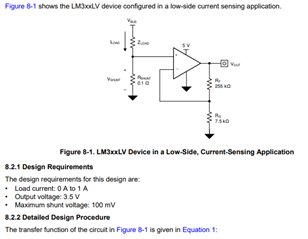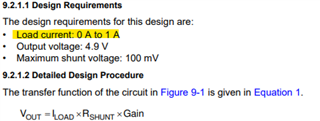Other Parts Discussed in Thread: TLV9001
Tool/software:
Hi Team
could my customer use 2.2A load current and 0.15ohm R shunt here?

if they can't do you have any suggestion about this application. second
if I use 3.3V Vcc. could I have 3.3 V vout?
BRs
Brian



